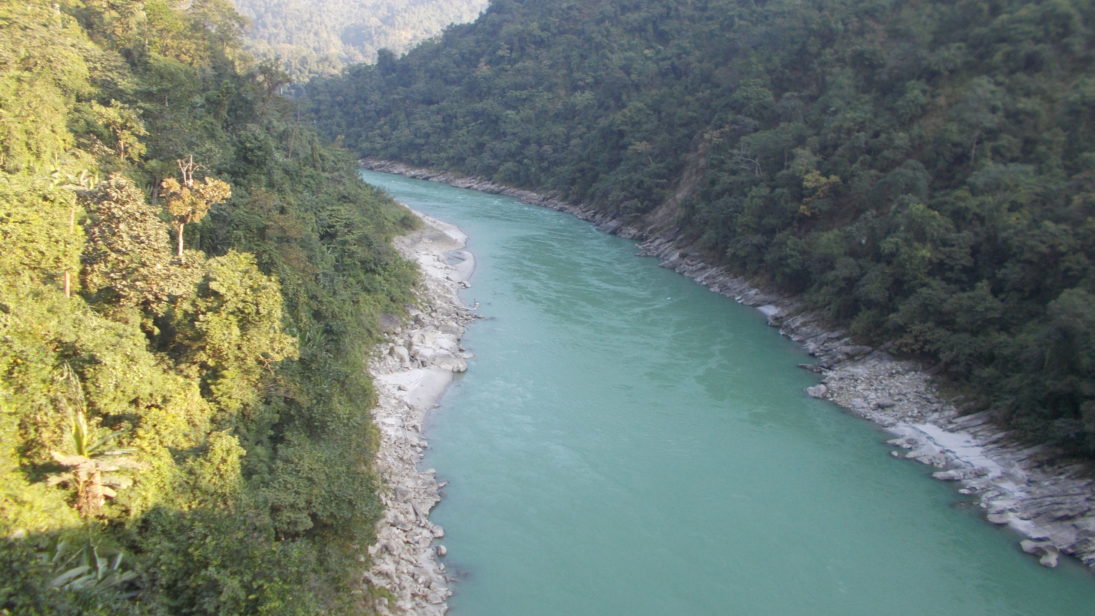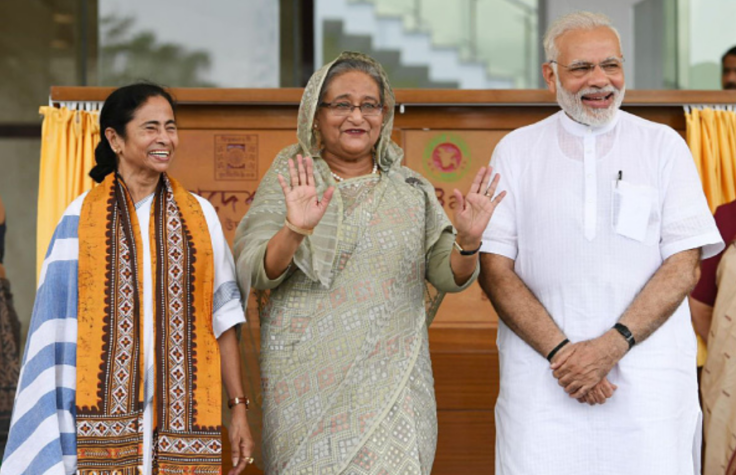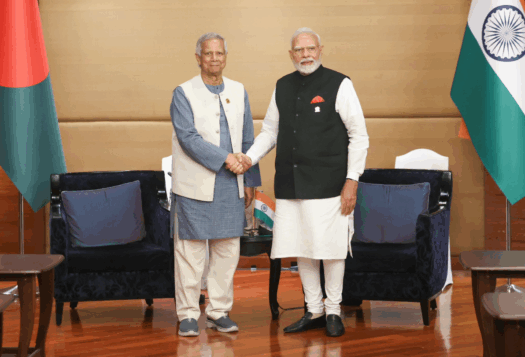
Amidst heightened border tensions between India and China, news that Bangladesh was considering moving ahead with extensive lending from China for management of the Teesta river came as a bolt from the blue for India. The development follows a 2016 Memorandum of Understanding (MOU), which was signed between state-owned Power China and the Bangladesh Water Development Board. This was particularly a loss of face for New Delhi because the current political dispensation in Bangladesh, under Sheikh Hasina’s Awami League, is generally viewed as more aligned to India than its domestic counterpart—Khaleda Zia’s Bangladesh Nationalist Party.
Bangladesh had recently sought financial support from China worth USD $6.4 billion for nine infrastructure and development projects in the country across various sectors. The Teesta collaboration stands out, however, because it allegedly indicates Bangladesh’s misgivings emerging from India’s failure to secure a deal with Bangladesh. The deal has also been argued to represent a missed opportunity for India to sustain the strong foundations of hydro-diplomacy with Bangladesh that began with signing the Ganges Water Sharing Treaty in 1996. On the other hand, Bangladesh is seen to be slipping from India’s circle of influence in its neighborhood, as the bonhomie between Beijing and Dhaka has grown since Bangladesh decided to embrace the Belt and Road Initiative in 2016.
However, a simplistic imposition of the evolving geopolitics in the region might not do justice to the complexities involved in the intricate hydro-diplomatic relation between the two neighbors that share 54 rivers between them. With or without the MOU, water sharing will remain a core component of India-Bangladesh relations. The Teesta dispute is still open for a resolution and Bangladesh looking towards China for support will have little consequence in dictating India and Bangladesh’s role in the hydro-future of their shared shared rivers.
A simplistic imposition of the evolving geopolitics in the region might not do justice to the complexities involved in the intricate hydro-diplomatic relation between the two neighbors that share 54 rivers between them.
An Elusive Deal
The very first mention of the Teesta in a political arrangement can be traced to the partition of India when the All India Muslim League had called for the districts of Darjeeling and Jalpaiguri being incorporated into East Pakistan since they were part of the Teesta catchment. Thereafter, data and information continued to be exchanged between India and Bangladesh and it was only in 1983 that a two-year ad hoc arrangement could be stitched together under the aegis of a Joint River Commission (JRC). However, since then, the Teesta had remained a sidenote as the attention shifted to the Ganges. Meanwhile, both countries continued to develop their irrigation infrastructure in the basin without even reaching an agreement in the first place. The situation had gone out of hand to such a degree that the JRC in its 36th meeting in 2005 had to observe that lean season flows would not be able to meet the requirements of both countries and any sharing formula should include shared sacrifices.
On at least two occasions—2011 and 2017—Bangladesh and India came close to signing a deal on the Teesta. However, on both occasions, West Bengal, under Mamata Banerjee, dissented last minute to a strategic water-sharing agreement. In a way, it compelled the Union Government to withdraw from what was almost a done deal. In 2017, Banerjee was more explicit with her reason while effectively vetoing against the emerging consensus by claiming that Teesta has no water to be shared. The domestic deadlock stems from the reluctance of the Union Government of India towards adopting a proactive stance in managing inter-state river waters—a power that is bestowed on it in the Indian Constitution. Even though the contingent response of the Union Government for subnational water disputes has been setting up tribunals, for disputes involving international watercourses, the stalemate has continued as evidenced by the Teesta dispute. Observers have termed this a case of “Conflictual Federalism.”

Understanding the Dispute
The point of contention between India and Bangladesh is mainly the lean season flow in the Teesta draining into Bangladesh. The Gazaldoba barrage in West Bengal, about 30 kilometers upstream of Jalpaiguri, has been instrumental in scripting Bangladesh’s misfortune as a downstream riparian state. From 1999 to 2006, the minimum monthly outflow at Kaunia station in Bangladesh for the months between December and April never exceeded 100 cubic meters per second as a bulk of the water was diverted through canals from the barrage. Looking towards the future, the influence of potential climate change will increase the probability of flood and drought and flow diversion at Gazaldoba would only exacerbate the impact of the two hazards in the downstream.
A narrative has also emerged in Bangladesh that the ruling Awami League has been “giving in” to India’s demands while getting nothing in return. This spans across various issue over shared rivers between the two countries such as the proposed Tipaimukh dam by India on a tributary of the Meghna river, the interlinking of rivers by India in the upstream and the prolonged stalemate over the Teesta. More recently, the water diversion from Gazaldoba by India has also been linked to the growing food insecurity in the northwestern part of Bangladesh.
While it might appear that India (or West Bengal) is being greedy and exploitative, one also needs to also consider the extensive expansion of irrigation coverage in the respective countries sharing the basin. As noted in a 2017 study, minimum flow in the Teesta dwindles to less than 200 cumecs (a cubic meter of water per second) during February which is insufficient either to operationalize Gazaldoba, which was designed by India to withdraw 520 cumecs or the Duani canal system in Bangladesh that is supposed to withdraw 283 cumecs in their full capacity. In other words, there is not enough water during the lean season for either of the barrages to operate at full capacity. High water consuming crops are another problem. Arguing that “crops are a cropper,” Nilanjan Ghosh has also pointed out that the acreage of dry season paddy or boro—a highly water-consuming crop—has increased significantly in both North Bengal and northwest Bangladesh. Vote bank politics, however, have kept governments in both the countries from attempting to counsel producers to diversify. An unregulated expansion in irrigation has created the acute shortage of water while the specificity of the basin and the unilateral water withdrawal by India to meet the irrigation requirements in North Bengal has brought the two countries at loggerheads.
Contrary to the popular narrative of Bangladesh getting entangled in China’s “debt trap,” evidence suggests that Bangladesh can engage responsibly with China to fuel its next phase of economic growth.
So, a Missed Opportunity?
It is tempting to conclude that India has missed an opportunity, but the devil certainly lies in the details. The Chinese investment is expected to enable Bangladesh to bolster its capacity and use more water from the river by improving water-use efficiency while reducing the losses from floods and riverbank erosion in the short-term (although it has also raised environmental concerns). However, the hydrological linkages between India and Bangladesh are a product of geography and a matter of shared history. Therefore, the opportunity to stitch an agreement over shared rivers, and particularly the Teesta, remains. The focus should further be on not just an agreement but an agreement that recognizes the needs of the ecosystem and explicitly recognizes and addresses the root of the problem—unsustainable use of water for boro paddy.
The Chinese investment is simply another source of funding for Bangladesh. Contrary to the popular narrative of Bangladesh getting entangled in China’s “debt trap,” evidence suggests that Bangladesh can engage responsibly with China to fuel its next phase of economic growth. However, it is also high time that India is proactive in its engagement vis-à-vis shared rivers and act in a resolute manner to usher a new era of hydro-diplomacy with Bangladesh. The Union Government in India just needs to exercise its constitutional mandate to be able to do so, something that it has long been hesitant to do and pressure from improving ties between Dhaka and Beijing may be just the push it needs.
***
Image 1: via Wikimedia Commons


